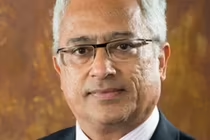
By Dr Sanjeev SabhlokThis article was originally published in an earlier issue of Smart Governance, and remains as relevant today as when it first appeared.
Dr Sanjeev Sabhlok, PhD in Economics from the University of Southern California, served 18 years in the Indian Administrative Service (IAS, 1982 batch) before moving to Australia, where he worked for 15 years as a senior economist in Victoria’s Department of Treasury and Finance. He resigned from the IAS in 2001 to campaign for fundamental reform of India’s governance system, and later resigned from his Australian government role in 2020 over concerns about civil liberties during the COVID-19 response. In this powerful reflection, he draws on his experience across two continents to offer a hard-hitting critique of India’s bureaucratic structure—and a bold proposal for a complete systemic overhaul.
I learnt about India’s governance system from within its bowels, during my time in the Indian Administrative Service (IAS). My experience included reporting to deeply corrupt ministers and dealing with arrogant senior officers who had not opened a single book since joining the service. I also had the opportunity to teach new recruits and senior IAS officers at the National Academy in Mussoorie, which gave me further insight into their attitudes.
Yes, many good people exist within India’s governance system. Indeed, the country survives because of them. But unfortunately, even these well-intentioned individuals do not care much for public policy, and as a result, India lacks policies grounded in sound economic theory or global best practices.
My Indian experience compares poorly with my ongoing 17-year career in Victorian government departments in Melbourne, including 12 years as an economist in the Department of Treasury and Finance.
The World Bank ranks India 90th in the world (out of 209 countries) in terms of government effectiveness—below Rwanda. A prestigious consulting firm based in Hong Kong once rated India’s bureaucracy the worst in Asia. Economist Lant Pritchett has described India’s bureaucracy as “one of the world’s top 10 biggest problems.”
At the time of independence, there was some debate about what kind of bureaucracy India should adopt. Sardar Patel rightly insisted on continuing the British colonial administrative model. That may have been the correct choice then, but the time for a complete overhaul is long overdue.
Unfortunately, many Indians are more wedded to the IAS than to their religion. It seems impossible for them to imagine governance without deputy commissioners and IAS officers. While other nations have consistently reviewed and upgraded their administrative systems, India has stuck with its antiquated British framework—further distorted by decades of misguided socialist policy.
The poor performance of India’s bureaucracy should not surprise anyone who understands how incentives work. Indian political leaders face perverse incentives. Add to that the IAS’s tenure protections, promotions and pensions disconnected from performance, constitutional safeguards against dismissal, historically low salaries, and the inability of senior officers to remove incompetent subordinates—and you get a structure almost guaranteed to fail.
Dismantling the IAS and Building a New Model
Let me preface the rest of this article by saying that what I propose will not be easy to implement. The entire country needs to understand how the current incentive structure fails and work toward a transitional path that ensures continuity during reform. Reforming India’s governance will require extraordinary intelligence, persistence, and courage.
These reforms will require significant legal changes, including to the Constitution. Therefore, this is essentially a political task. Unfortunately, no existing major political party is likely to implement such reforms because they benefit directly from the corruption sustained by the current system.
That is why I resigned from the IAS in January 2001—to work toward forming a liberal political party in India that would offer genuine governance reforms. The manifesto of the Swarna Bharat Party (which I helped form in 2013) is committed to such reforms. Assuming SBP is given a governing mandate, India’s transformation could be completed in approximately three years.
A high-level note: there is nothing particularly new in the model I suggest below. A similar system was prevalent in ancient India, as described by Chanakya in the Arthashastra. Similar models exist today in high-performing countries like Australia and Singapore, often under the umbrella of “New Public Management”—which is essentially just structured common sense.
Good governance starts at the top. Lee Kuan Yew’s writings and achievements show how transformative leadership can reform a nation. India’s Prime Minister must be honest—something we have not witnessed since independence. Without honesty at the top, a competent and honest bureaucracy is impossible.
Our politicians spend crores in unaccounted money to contest elections; naturally, they must be corrupt. I have discussed this in detail in my 2008 book Breaking Free of Nehru (Anthem Press).
I have also elaborated on the reforms needed to attract competent and ethical individuals into Indian politics, in both BFN and a January 2017 article in The Wire. For the purpose of this article, I will assume—heroically—that electoral and political reforms have occurred, and that India has honest politicians who can be trusted to hire competent and honest people. With that assurance, we can proceed.
The Reformed Bureaucratic Model
The reformed model would eliminate all tenured services like the IAS and initiate fresh recruitment from the top down. Departmental secretaries would be hired from the open market by the Prime Minister or relevant Chief Minister on a four- or five-year contract. They would be highly paid and could be immediately dismissed for failure to perform.
These secretaries would then recruit the next layer of officials—again from the open market. The same approach would cascade through each level. All executives would be on contracts that allow for instant termination for non-performance. Below the executive level, appointments would be permanent but still performance-based.
Permanent staff would also be hired through the market by their immediate managers. This would ensure accountability through a clear hierarchy, directly linking government objectives to the delivery mechanism.
Competitive salaries across all bureaucratic levels are essential. Compensation should be benchmarked against the private sector and determined by an independent expert body, following the Singapore model. A robust performance management system should reward excellence. There would be no pensions or mandatory service bonds—employees should be free to resign with a month’s notice. These reforms must also extend to local government.
Corruption incentives would be dramatically reduced—but not entirely eliminated. An independent corruption investigation body, modeled after Singapore’s, would be established to report to the Prime Minister or Chief Minister. If corruption is found within a department, the departmental secretary would be dismissed—regardless of personal culpability. Corrupt officials would face strict penalties, including long prison terms. This would deter bureaucratic corruption.
Under this model, managers would have the full authority to dismiss underperforming subordinates, with minimal yet essential safeguards. India’s entrenched culture of bureaucratic mediocrity would be replaced by a lean, agile, and efficient system.
The Principle: Accountability
The driving principle of this system is accountability—a stark contrast to the near-total lack of it today. Article 311 of the Constitution and rigid cadre rules make it impossible for states to appoint competent secretaries from the open market. This must change.
As citizens of India, we face a daily choice: to continue being the world’s largest misgoverned democracy or to strive for excellence. Becoming the best is never easy—it demands capacity, clarity, and resolve.
A Call to Action
In a democracy, fundamental reforms can only happen when citizens are engaged. I urge everyone to reflect on this core issue, which affects our daily lives, and support the political change that India so desperately needs.

















